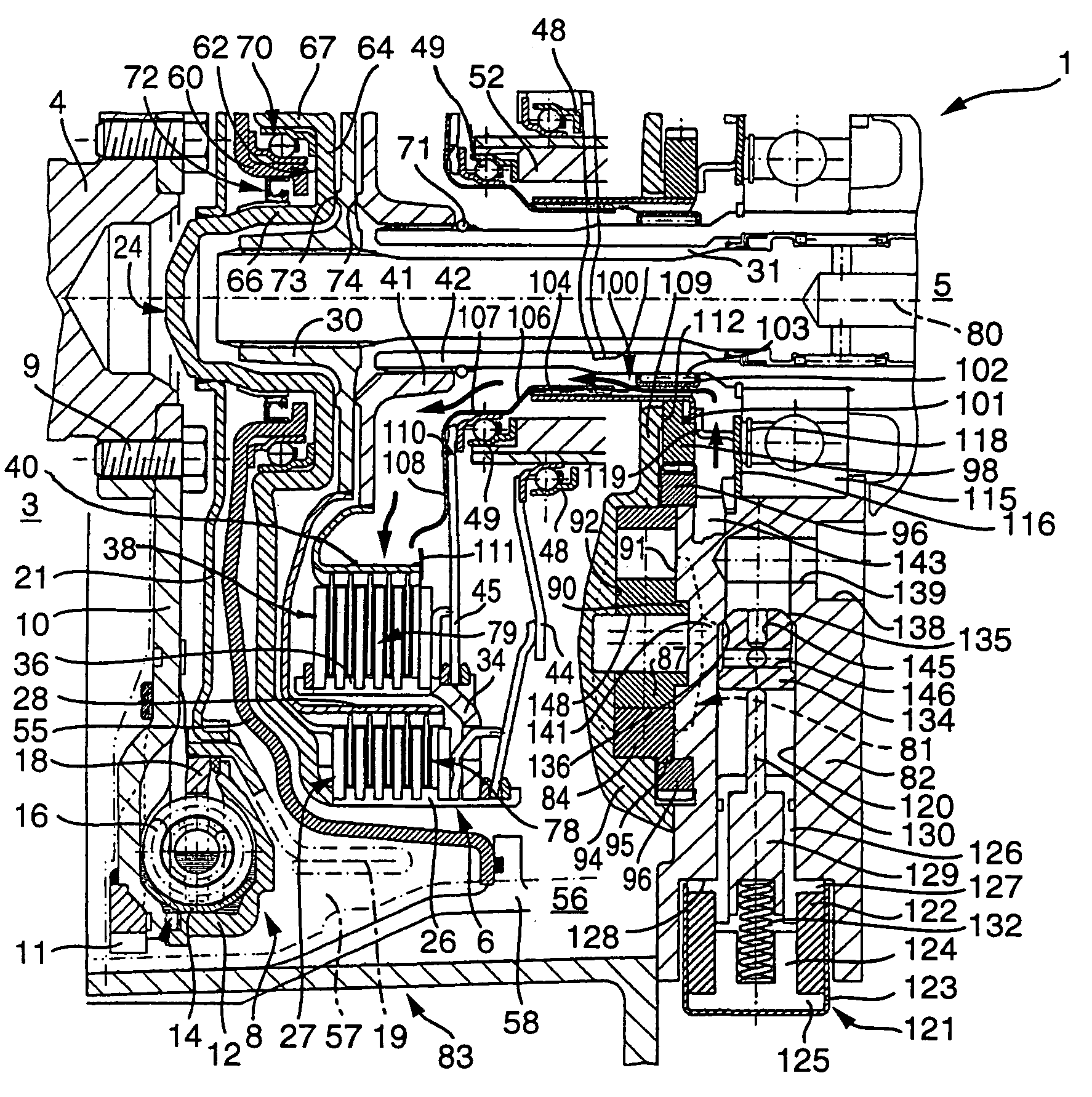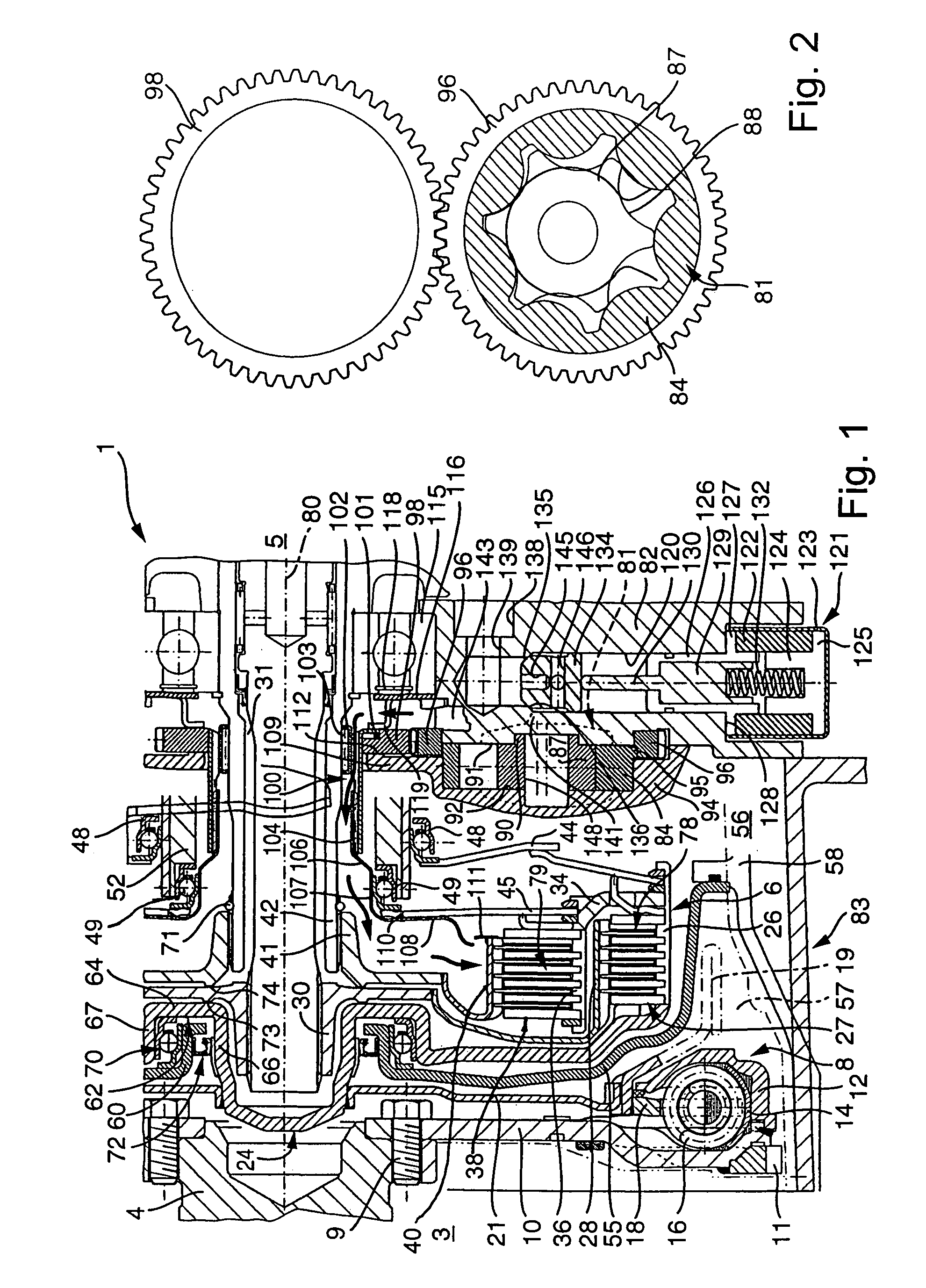Torque transmitting unit and power train having a torque transmitting unit
a technology of torque transmitting unit and power train, which is applied in the direction of mechanical actuated clutches, fluid gearings, gearings, etc., can solve the problem of consumption of correspondingly large amounts of energy
- Summary
- Abstract
- Description
- Claims
- Application Information
AI Technical Summary
Benefits of technology
Problems solved by technology
Method used
Image
Examples
Embodiment Construction
[0038]Part of a power train 1 of a motor vehicle is illustrated in FIG. 1. Positioned between a drive unit 3, in particular a combustion engine, from which a crankshaft 4 extends, and a transmission 5, is a wet operating double clutch 6 of multiple-disk design. Connected between drive unit 3 and double clutch 6 is a vibration damping unit 8. The vibration damping unit is preferably a dual mass flywheel.
[0039]Crankshaft 4 of combustion engine 3 is rigidly connected through a screw connection 9 to an input part 10 of vibration damping unit 8. Input part 10 of vibration damping unit 8 has essentially the form of a circular ring positioned in the radial direction, to which a starter gear rim 11 is welded radially on the outside. In addition, a centrifugal mass 12 is welded onto the input part 10 of vibration damping unit 8. Furthermore, attached to input part 10 of vibration damping unit 8 is a vibration damper cage 14, which at least partially incorporates a plurality of energy storage...
PUM
 Login to View More
Login to View More Abstract
Description
Claims
Application Information
 Login to View More
Login to View More - R&D
- Intellectual Property
- Life Sciences
- Materials
- Tech Scout
- Unparalleled Data Quality
- Higher Quality Content
- 60% Fewer Hallucinations
Browse by: Latest US Patents, China's latest patents, Technical Efficacy Thesaurus, Application Domain, Technology Topic, Popular Technical Reports.
© 2025 PatSnap. All rights reserved.Legal|Privacy policy|Modern Slavery Act Transparency Statement|Sitemap|About US| Contact US: help@patsnap.com



